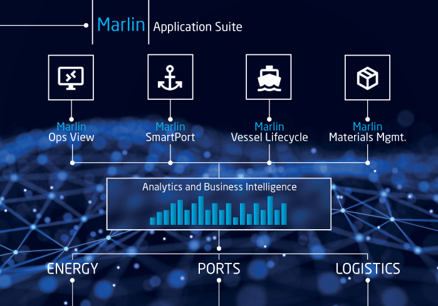As vessel traffic continues to increase, the integration of software-based systems has emerged as a promising solution to enhance collision avoidance capabilities.
The Marlin Business Team discusses the significance of collision avoidance in marine vessels and evaluates the advantages and disadvantages associated with the utilization of software in this domain.
Introduction:
With maritime trade being the backbone of the global economy, the prevention of collisions between vessels is of the utmost importance. Collisions can result in severe consequences such as loss of lives, property damage, environmental pollution, and economic repercussions.
To address this challenge, collision avoidance systems have been developed, leveraging various technologies, including radar, the Automatic Identification System (AIS), and increasingly, software-based solutions.
The Importance of Collision Avoidance:
Effective collision avoidance systems are essential for maintaining safe navigation. These systems provide real-time situational awareness, enabling early detection of potential collision threats and facilitating timely decision-making by vessel operators.
By alerting operators to potential risks and suggesting suitable corrective actions, these systems help prevent accidents, minimize human errors, and enhance overall maritime safety.
Pros of Software Integration:
1. Enhanced Accuracy and Reliability:
Software-based collision avoidance systems leverage advanced algorithms and machine learning techniques to analyze vast amounts of data, improving accuracy and reliability in identifying collision risks. They can effectively process multiple information sources, such as radar, AIS, and environmental factors, providing comprehensive situational awareness.
2. Predictive Capabilities:
Software systems can employ predictive modeling to anticipate vessel trajectories, enabling early identification of potential collision scenarios. By considering factors such as weather conditions, traffic patterns, and vessel behavior, these systems can assist in proactive decision-making, reducing the risk of accidents.
3. Automation and Assistance:
Software integration can automate certain collision avoidance tasks, reducing the cognitive load on operators and enhancing their decision-making abilities.
Additionally, software systems can provide real-time alerts, route optimization suggestions, and other assistance features to support vessel operators in avoiding collisions effectively.
Cons of Software Integration:
1. Reliance on Technology:
Software-based collision avoidance systems heavily rely on the accuracy and reliability of data inputs. Technical failures, cyber threats, or data inaccuracies can undermine the effectiveness of these systems. Thus, there is a need for robust data verification mechanisms and redundant backup systems to ensure system integrity.
2. Human-Machine Interaction:
The integration of software systems requires a careful balance between human and machine roles. Excessive reliance on automation may lead to complacency or diminished situational awareness among vessel operators.
Adequate training and human supervision are crucial to maintaining a healthy human-machine interaction.
3. Cost and Implementation Challenges:
Integrating software-based collision avoidance systems into existing vessel infrastructure may require significant investments in hardware, software, and training. Retrofitting older vessels with such systems can pose additional challenges due to compatibility issues and technological constraints.
Conclusion:
Collision avoidance is paramount to ensuring maritime safety. Software integration offers numerous advantages, such as enhanced accuracy, predictive capabilities, and automation.
Striking the right balance between software-based systems and human expertise is essential for realizing the full potential of collision avoidance in marine vessels.
The Marlin Application Suite
At Sercel, the Marlin business team understands all the PROs and CONs and can discuss and understand your challenges to ensure that the right balance is struck for your needs regarding collision avoidance.

